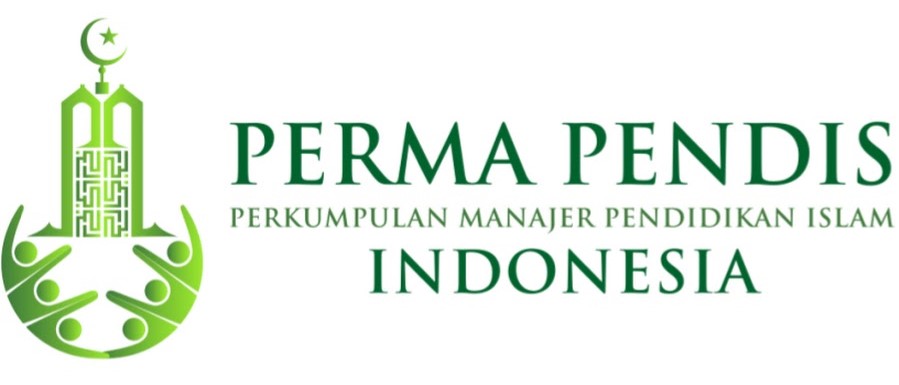A Conceptual Model For The Interplay Among Digital Transformation, Information System Quality, The Use Of E-Kinerja Application, And State Civil Apparatus Work Productivity
DOI:
https://doi.org/10.29240/jsmp.v8i1.10125Keywords:
Digital Transformation, Information System Quality, The Use Of E-Kinerja Application, And Work ProductivityAbstract
This research aimed to develop a conceptual model examining the interplay among digital transformation, information system quality, the use of E-Kinerja application and State Civil Apparatus (SCA) work productivity. As the foregoing, this research deployed four variables which were drawn into a conceptual model by formulating six hypotheses. This research used the Partial Least Squares Structural Equation Modeling approach to frame the model and statistically testing it. 250 SCAs (both lecturers and staff at IAIN Curup) were involved as the respondents because they had adequate experiences regarding the use of E-Kinerja application. Data were collected using valid and reliable questionnaires. Using Smart PLS 4 program, the data were analyzed to evaluate the developed conceptual model. The analysis results demonstrated that digital transformation positively influenced SCA Work productivity (H1) with a path coefficient of 0.202 and T-statistics of 4.696. The impacts of digital transformation on the use of E-Kinerja application (H2) and on the quality of information systems (H3) were very strong, with path coefficients of 0.330 and 0.690 respectively, and very high T-statistics. The influence of information system quality on the use of E-Kinerja application (H4) was also significant with a coefficient of 0.637 and T-statistics of 18.300. Even though the direct influence of information system quality on SCA work productivity (H5) was more moderate, the significance value still showed that information system quality played a vital role in supporting efficient work productivity. Finally, a very prominent result was the influence of using the E-Kinerja application on SCA Work productivity (H6), with a coefficient of 0.589 and T-statistics of 6.572. The forgoing data demonstrated that the developed model was well-confirmed empirically. This research highlights that a well-designed application for work management, such as E-Kinerja, when supported by the implementation of digital transformation and information system quality, can enhance employees’ work productivity. Future research is expected to examine moderating factors that can influence the effectiveness of digital transformation.
Downloads
References
Abdulrahim, H., & Mabrouk, F. (2020). COVID-19 and the digital transformation of Saudi higher education. Asian Journal of Distance Education, 15(1), 291–306.
Akour, M., & Alenezi, M. (2022). Higher education future in the era of digital transformation. Education Sciences, 12(11), 784.
Aliah, M., & Warsah, I. (2021). Evaluasi pembelajaran selama pandemi COVID-19: Tantangan dan solusi. Jurnal As-Salam, 5(2), 164–174.
AlMazrouei, H. (2022). Empowerment leadership as a predictor of expatriates learning goal orientation and creative work involvement. International Journal of Organizational Analysis, 30(6), 1569–1594. https://doi.org/10.1108/IJOA-08-2020-2366
Amelia, N., & Hubies, A. V. (2021). Performance of ASN (Government Employee) in Implementation of the Work from Home Policy in the Regional Secretariat of Bogor Regency. Jurnal Manajemen (Edisi Elektronik), 12(3), 461–474.
Bai, A., & Vahedian, M. (2023). Beyond the Screen: Safeguarding Mental Health in the Digital Workplace Through Organizational Commitment and Ethical Environment (arXiv:2311.02422). arXiv. http://arxiv.org/abs/2311.02422
Benavides, L. M. C., Tamayo Arias, J. A., Arango Serna, M. D., Branch Bedoya, J. W., & Burgos, D. (2020). Digital transformation in higher education institutions: A systematic literature review. Sensors, 20(11), 3291.
Bond, M., Buntins, K., Bedenlier, S., Zawacki-Richter, O., & Kerres, M. (2020). Mapping research in student engagement and educational technology in higher education: A systematic evidence map. International Journal of Educational Technology in Higher Education, 17(1), 2. https://doi.org/10.1186/s41239-019-0176-8
Bygstad, B., Øvrelid, E., Ludvigsen, S., & Dæhlen, M. (2022). From dual digitalization to digital learning space: Exploring the digital transformation of higher education. Computers & Education, 182, 104463. https://doi.org/10.1016/j.compedu.2022.104463
Chatterjee, S., Rana, N. P., Dwivedi, Y. K., & Baabdullah, A. M. (2021). Understanding AI adoption in manufacturing and production firms using an integrated TAM-TOE model. Technological Forecasting and Social Change, 170, 120880. https://doi.org/10.1016/j.techfore.2021.120880
Elisvi, J., Archanita, R., Wanto, D., & Warsah, I. (2020). Analisis pemanfaatan media pembelajaran online di smk it rabbi radhiyya masa pandemi covid-19. Al-Tarbawi Al-Haditsah: Jurnal Pendidikan Islam, 5(2). https://www.jurnal.syekhnurjati.ac.id/index.php/tarbawi/article/view/6721
Eritrina, E., Nur, A. C., Aslinda, A., & Herman H, H. H. (2023). Implementation of E-Kinerja in Increasing Work Productivity. Jurnal Administrare: Jurnal Pemikiran Ilmiah Dan Pendidikan Administrasi Perkantoran, 10(2), 303–310.
Hair, J. F., Risher, J. J., Sarstedt, M., & Ringle, C. M. (2019). When to use and how to report the results of PLS-SEM. European Business Review.
Hair Jr, J. F., Howard, M. C., & Nitzl, C. (2020). Assessing measurement model quality in PLS-SEM using confirmatory composite analysis. Journal of Business Research, 109, 101–110. https://doi.org/10.1016/j.jbusres.2019.11.069
Kamela, I., Rosha, Z., Desiyanti, R., & Windi, A. (2023). Measuring the success of the lecturer e-performance application at Bung Hatta University. Jurnal Ipteks Terapan, 17(3), 710–717. https://doi.org/10.22216/jit.v17i3.2583
Kaputa, V., LouÄanová, E., & Tejerina-Gaite, F. A. (2022). Digital transformation in higher education institutions as a driver of social oriented innovations. Social Innovation in Higher Education, 61, 81–85. https://doi.org/10.1007/978-3-030-84044-0
Kaseger, M. R., Pangkey, I., & Dilapanga, A. R. (2021). The effect of work culture and work motivation on employee performance at Manado State University. Technium Soc. Sci. J., 21, 167.
Kaushik, M. K., & Agrawal, D. (2021). Influence of technology readiness in adoption of e-learning. International Journal of Educational Management, 35(2), 483–495. https://doi.org/10.1108/IJEM-04-2020-0216
Logachev, M. S., Orekhovskaya, N. A., Seregina, T. N., Shishov, S., & Volvak, S. F. (2021). Information system for monitoring and managing the quality of educational programs. Journal of Open Innovation: Technology, Market, and Complexity, 7(1), 93.
Marikyan, D., & Papagiannidis, S. (2023). Technology Acceptance Model. TheoryHub Book. Retrieved June, 6, 1–17.
Marks, A., & Al-Ali, M. (2022). Digital transformation in higher education: A framework for maturity assessment. In COVID-19 challenges to university information technology governance (pp. 61–81). Springer. https://link.springer.com/chapter/10.1007/978-3-031-13351-0_3
Masalimova, A. R., Khvatova, M. A., Chikileva, L. S., Zvyagintseva, E. P., Stepanova, V. V., & Melnik, M. V. (2022). Distance learning in higher education during COVID-19. Frontiers in Education, 7, 822958. https://www.frontiersin.org/articles/10.3389/feduc.2022.822958/full
McCarthy, A. M., Maor, D., McConney, A., & Cavanaugh, C. (2023). Digital transformation in education: Critical components for leaders of system change. Social Sciences & Humanities Open, 8(1). https://www.sciencedirect.com/science/article/pii/S2590291123000840
Mukul, E., & Büyüközkan, G. (2023). Digital transformation in education: A systematic review of education 4.0. Technological Forecasting and Social Change, 194. https://doi.org/10.1016/j.techfore.2023.122664
Mulyani, S. (2020). Influence of Education and Training on Motivation and Productivity of Civil Servant Lecturers. International Conference on Science and Education and Technology (ISET 2019), 461–465. https://www.atlantis-press.com/proceedings/iset-19/125941455
Murphy, S. E. (2016). Leadership Lessons from Creative Industries: The Case of Producers, Directors, and Executives in Film and Television. In C. Peus, S. Braun, & B. Schyns (Eds.), Monographs in Leadership and Management (Vol. 8, pp. 241–273). Emerald Group Publishing Limited. https://doi.org/10.1108/S1479-357120160000008008
Murphy, S. E., & Johnson, S. K. (2016). Leadership and Leader Developmental Selfâ€Efficacy: Their Role in Enhancing Leader Development Efforts. New Directions for Student Leadership, 2016(149), 73–84. https://doi.org/10.1002/yd.20163
Nguyen, A., Tuunanen, T., Gardner, L., & Sheridan, D. (2021). Design principles for learning analytics information systems in higher education. European Journal of Information Systems, 30(5), 541–568. https://doi.org/10.1080/0960085X.2020.1816144
Niswaty, R., Basit, M. A., Nur, A. C., & Arhas, S. H. (2023). Effect of Application of E-Kinerja Assessment System in Improving Employee Performance. KnE Social Sciences, 1–9.
Nurhas, I., Aditya, B. R., Jacob, D. W., & Pawlowski, J. M. (2022). Understanding the challenges of rapid digital transformation: The case of COVID-19 pandemic in higher education. Behaviour & Information Technology, 41(13), 2924–2940. https://doi.org/10.1080/0144929X.2021.1962977
Nuryanti, Y., Hutagalung, D., Nadeak, M., Abadiyah, S., & Novitasari, D. (2021). Understanding the links between system quality, information quality, service quality, and user satisfaction in the context of online learning. International Journal of Social and Management Studies, 2(4), 54–64.
Pencheva, I., Esteve, M., & Mikhaylov, S. J. (2020). Big Data and AI – A transformational shift for government: So, what next for research? Public Policy and Administration, 35(1), 24–44. https://doi.org/10.1177/0952076718780537
Rahmania, I., Budiono, B., Soenaryo, S. F., Syakur, A., & Tinus, A. (2020). Implementation of internal quality guarantee system to increase the quality of education in Junior High School 21 Malang. Budapest International Research and Critics in Linguistics and Education (BirLE) Journal, 3(1), 421–432.
Schmid, Y., & Dowling, M. (2022). New work: New motivation? A comprehensive literature review on the impact of workplace technologies. Management Review Quarterly, 72(1), 59–86. https://doi.org/10.1007/s11301-020-00204-7
Simonova, O., Barashyan, V., Gampartsumov, A., & Khlebnikova, M. (2021). The application of reality simulators for improving the education quality at universities. E3S Web of Conferences, 273, 12081. https://www.e3s-conferences.org/articles/e3sconf/abs/2021/49/e3sconf_interagromash2021_12081/e3sconf_interagromash2021_12081.html
Wang, H., Ding, H., & Kong, X. (2023). Understanding technostress and employee well-being in digital work: The roles of work exhaustion and workplace knowledge diversity. International Journal of Manpower, 44(2), 334–353. https://doi.org/10.1108/IJM-08-2021-0480
Wantania, L. J., Hidayanto, A. N., Ruldeviyani, Y., & Kurnia, S. (2021). Analysis of user satisfaction factors of E-Kinerja application as utilization of the paperless office system: A case study in regional civil service agency, North Sulawesi province. IOP Conference Series: Earth and Environmental Science, 700(1), 1–12. https://doi.org/10.1088/1755-1315/700/1/012011
Warsah, I. (2021). Islamic religious teachers’ efforts to motivate students and implement effective online learning. Edukasi Islami: Jurnal Pendidikan Islam, 10(1), 283–394.
Warsah, I., Imron, Siswanto, & Sendi, O. A. M. (2020). Strategi Implementatif KKNI Pendidikan Islam di IAIN Curup dalam Pembelajaran. Jurnal Tarbiyatuna, 11(1), 77–90.
Yağcı, M. (2022). Educational data mining: Prediction of students’ academic performance using machine learning algorithms. Smart Learning Environments, 9(1), 11. https://doi.org/10.1186/s40561-022-00192-z
Yanuarita, H. A., & Susanto, D. (2023). Evaluation of the Implementation of E-Kinerja at the Nganjuk Regency Secretariat. JISIP (Jurnal Ilmu Sosial Dan Pendidikan), 7(4), 3480–3484. https://doi.org/10.58258/jisip.v7i4.6084


















